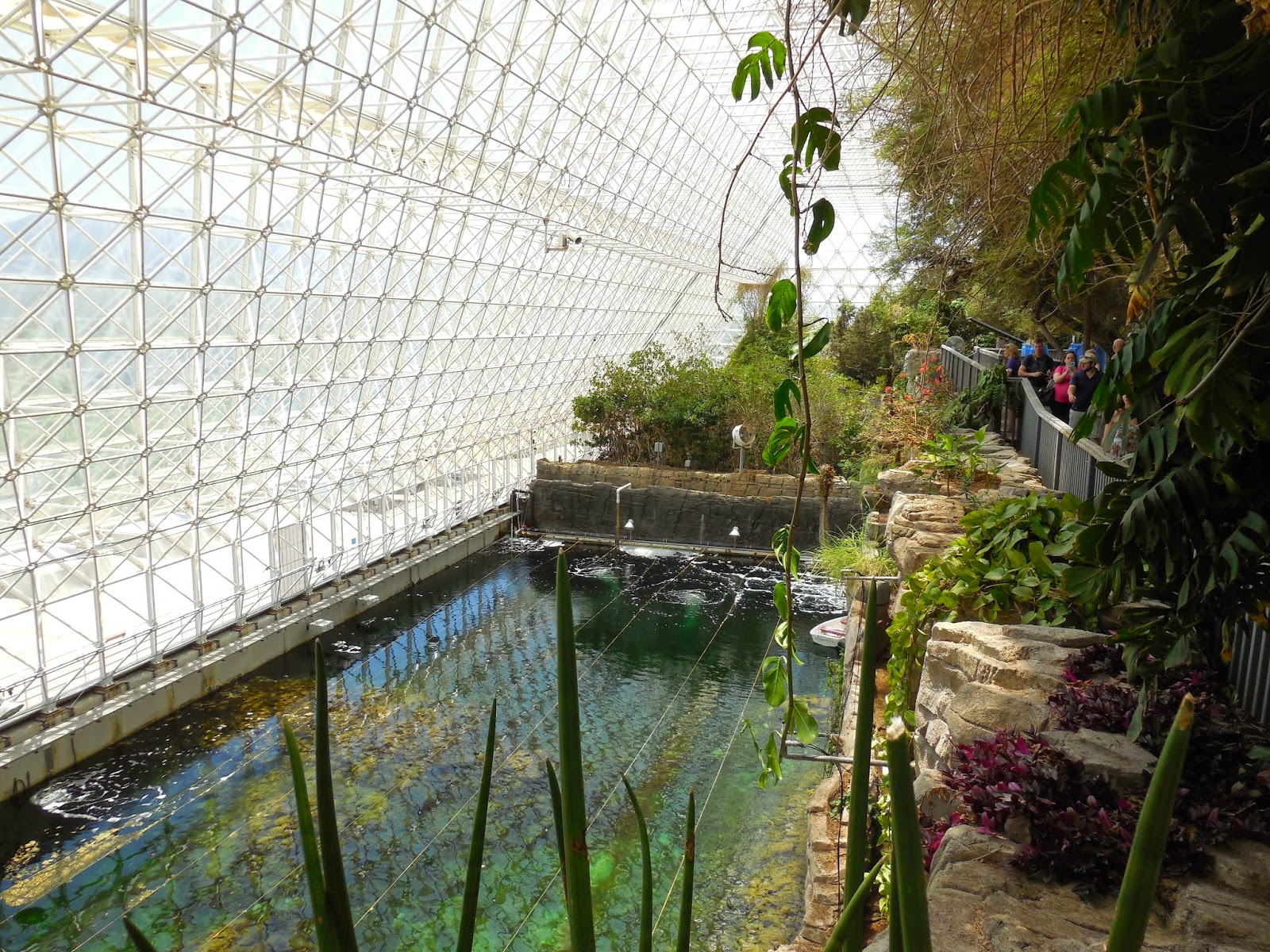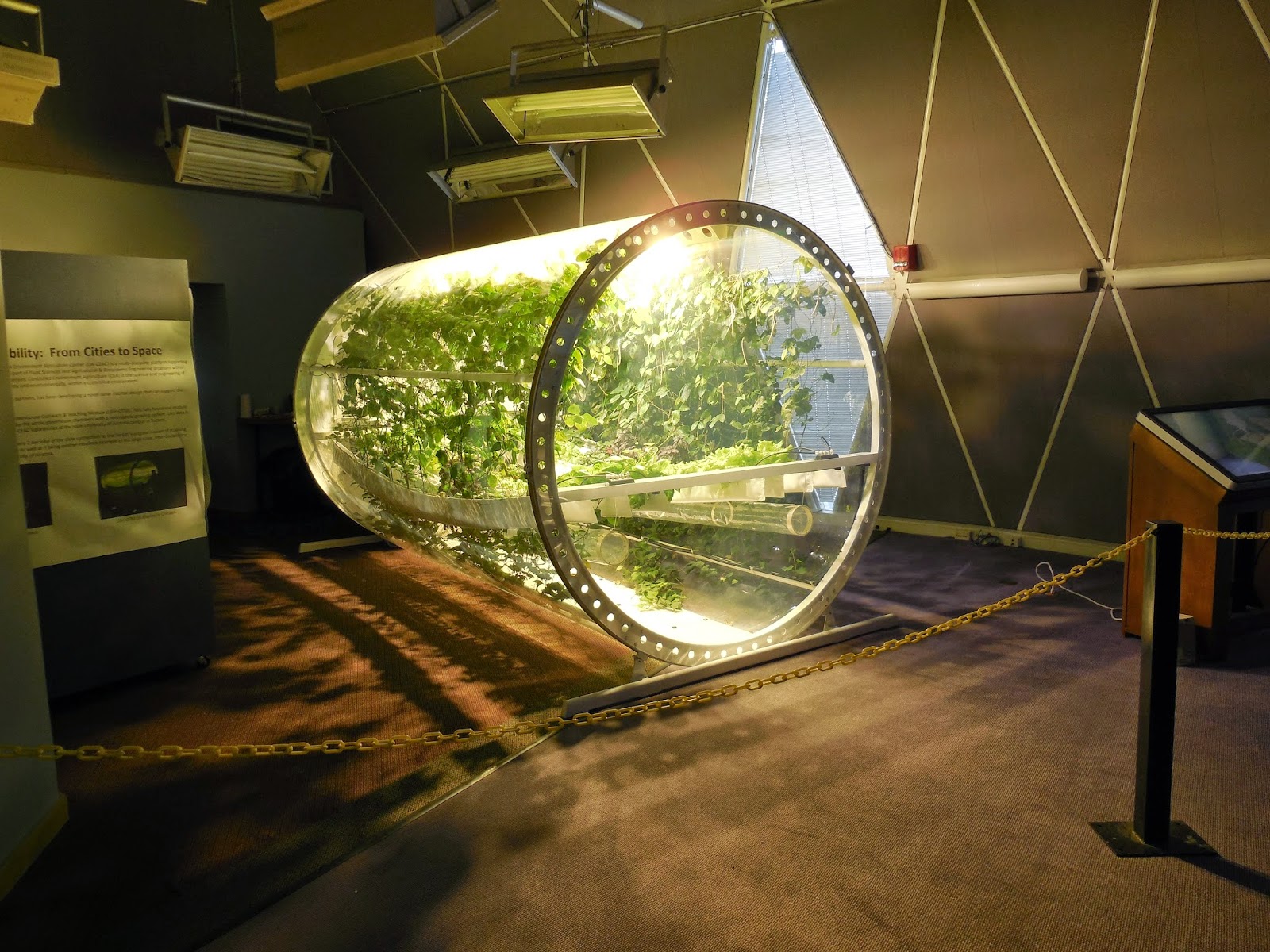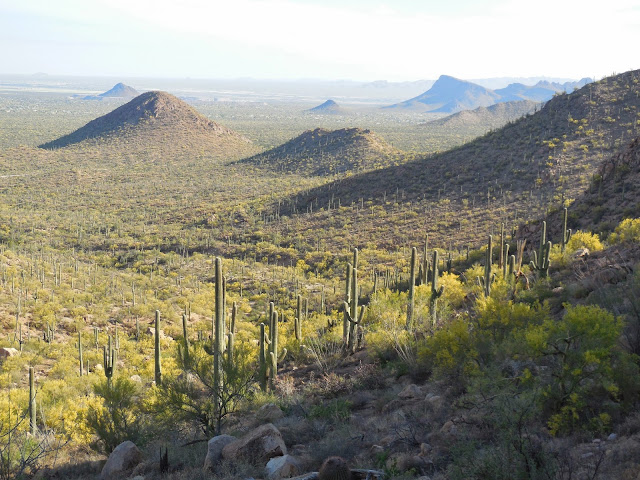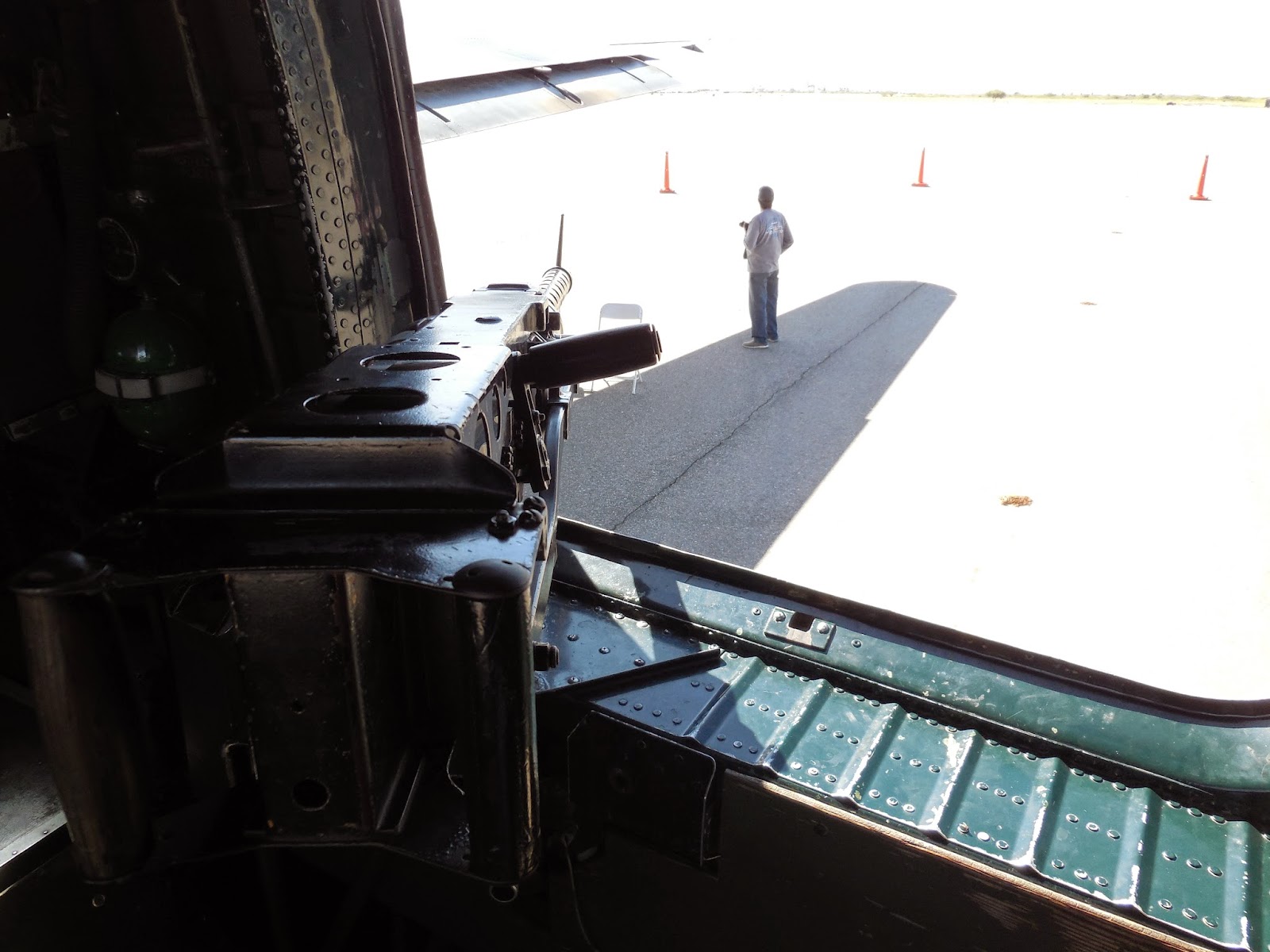
Directions: Biosphere 2 is located about 20 miles to the north of Tucson.The easiest way to get to the facility is to take Ina Road toward the Oro Valley. A driver has to be patient because of all the stoplights and traffic. Hours are 9-4 pm Monday through Sunday. Admission is about $20 per person but discounts are offered for U of A students as well as military and senior citizens.
History: Biosphere 2 has had a rich history throughout the years. In 1960 and 1970 this area served as a conference center for Motorola and the University of Arizona. Space Biospheres Ventures brought the site in 1986 to research the feasibility of self-sustaining space colonization technology. The idea behind the project was to construct a small representation of the Earth with a rain forest, desert, ocean, orchard and farm. "Biospherians" would live inside the facility for up to two years excluded from the outside world grow their food and raise their own animals. The first group of eight entered the Biosphere in 1991 and stayed for two years. A second group entered in March of 1994 and stayed for about six months before they were extracted. Many people thought the experiment was a failure however, it did show how difficult it is for a group of people to be self-sustained in an enclosure and survive. From 1996-2003 Columbia University managed the Biosphere and reconfigured the building to study the effects of carbon dioxide on plant life. The facility ceased to be a closed system. In 2007 until 2011 the University of Arizona leased the property from CDO Ranching. In 2011 the structure was given to the University of Arizona for scientific research. Through the years hundreds of papers have been published based on research that has been done at the Biosphere. (Information from www.b2science.org)
Tours are required to visit the Biosphere. They are about 1.5 to two hours long. Make sure to bring water and walking shoes because visitors walk about a mile and temperatures can be hot at any time of the year. On each tour visitors will see the rain forest environment, the ocean/grassland, a desert environment based on the Baja California ecosystem, and a visit to the south lung (helps regulate air pressure inside the structure). The tour guides are very knowledgeable and provide a wealth of information about the facility's history as well as present experiments being conducted by the University of Arizona. For example, one of Earth system's processes that couldn't be duplicated in the Biosphere was wind. As a result, the trees have not developed a strong outer supportive layer and have to be supported to keep from falling over. In the future researchers are going to change the ocean to model the Sea Cortez. It will have a tidal zone complete with tidal creatures and an island.









View of the ocean from underneath











































